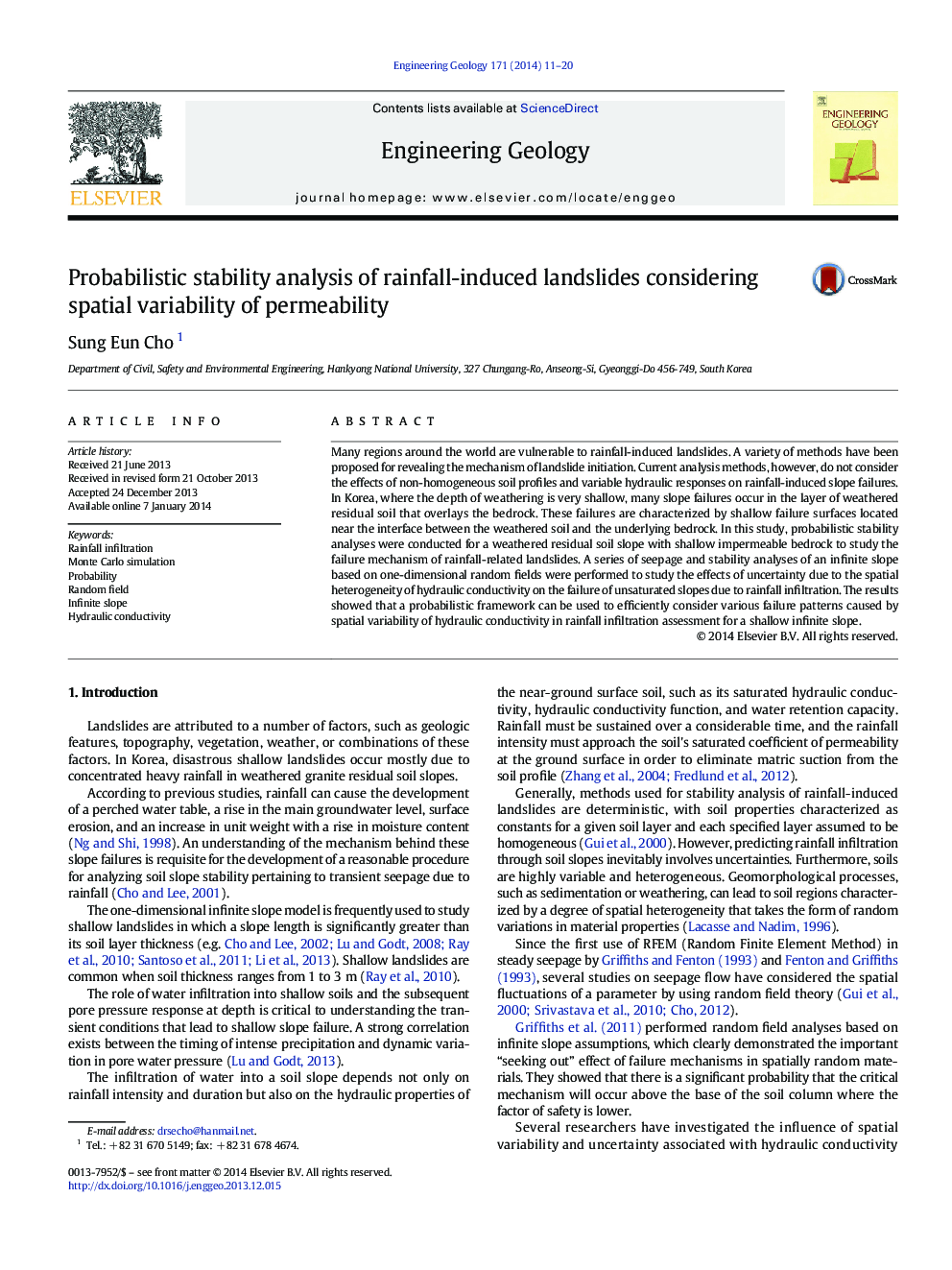| Article ID | Journal | Published Year | Pages | File Type |
|---|---|---|---|---|
| 4743610 | Engineering Geology | 2014 | 10 Pages |
•Probabilistic stability analysis of rainfall-induced landslide was performed.•The saturated hydraulic conductivity of slope soil was considered as a random field.•The stability behavior depends on the location of the critical failure surface.•The critical failure surface continuously changes with the progress of wetting front.•Probabilistic analysis enables consideration of various failure patterns in landslide.
Many regions around the world are vulnerable to rainfall-induced landslides. A variety of methods have been proposed for revealing the mechanism of landslide initiation. Current analysis methods, however, do not consider the effects of non-homogeneous soil profiles and variable hydraulic responses on rainfall-induced slope failures. In Korea, where the depth of weathering is very shallow, many slope failures occur in the layer of weathered residual soil that overlays the bedrock. These failures are characterized by shallow failure surfaces located near the interface between the weathered soil and the underlying bedrock. In this study, probabilistic stability analyses were conducted for a weathered residual soil slope with shallow impermeable bedrock to study the failure mechanism of rainfall-related landslides. A series of seepage and stability analyses of an infinite slope based on one-dimensional random fields were performed to study the effects of uncertainty due to the spatial heterogeneity of hydraulic conductivity on the failure of unsaturated slopes due to rainfall infiltration. The results showed that a probabilistic framework can be used to efficiently consider various failure patterns caused by spatial variability of hydraulic conductivity in rainfall infiltration assessment for a shallow infinite slope.
